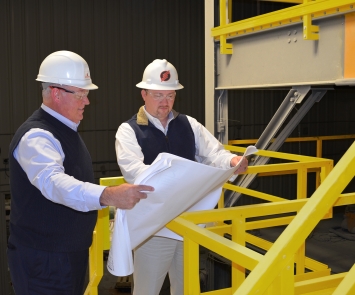Why Engineers Should Expand Professional Training on Structural Composites
Structural Engineers learn an immense amount about various structural materials in their formal schooling and training. In most cases, the focus of this education is based on designs with metals, wood, and concrete, with a lesson or two thrown in about alternate materials. This leaves the engineer on his/her own to dig deeper to gain insight into more advanced materials and how to apply them in structural designs.
 Part of keeping up with the ongoing developments in the industry involves seeking Professional Development Hour (PDH) credits, and most states require them for maintaining a P.E. license. These hours are dedicated to developing skills or knowledge relevant to the engineer’s role and are crucial for any engineer who wishes to stay sharp.
Part of keeping up with the ongoing developments in the industry involves seeking Professional Development Hour (PDH) credits, and most states require them for maintaining a P.E. license. These hours are dedicated to developing skills or knowledge relevant to the engineer’s role and are crucial for any engineer who wishes to stay sharp.
Below are 7 Reasons why engineers should earn some of their PDH credits by learning about structural composites.
1. Expanding skillset: Composites training allows structural engineers to gain expertise in working with advanced materials and technologies. Learning about composites expands their skillset beyond traditional materials, enabling them to design and analyze structures using composites more effectively.
2. Utilizing lightweight materials: Composites are lightweight yet strong materials, which can significantly impact the design and construction of structures. Understanding composites enables structural engineers to explore innovative design solutions that optimize weight and material usage, leading to more efficient and cost-effective projects.
3. Designing for specific applications: Composites offer unique properties that make them ideal for specific applications, such as high-strength, corrosion resistance, and durability. By taking advantage of composites training, structural engineers can learn how to choose and design structures tailored to the requirements of specific industries like industrial and marine or environments such as those that experience seismic activity or heavy corrosion.
4. Enhancing sustainability: Composites often have excellent durability and resistance to environmental degradation. Learning to incorporate composites into structural designs can lead to more sustainable and longer-lasting infrastructure, reducing the need for frequent maintenance or replacement.
5. Addressing design challenges: Some projects may have specific design challenges that can be effectively addressed using composites. For example, composites can be used to create complex shapes, provide customized solutions, or retrofit existing structures. Training in composites enables structural engineers to identify and tackle these challenges creatively.
6. Meeting industry demands: As composites gain popularity in various industries, there is an increasing demand for engineers with expertise in working with these materials. By investing in composites training, structural engineers can position themselves as valuable assets in the job market, working on cutting-edge projects and being sought after by forward-thinking companies.
7. Participating in emerging fields: Composites are widely used in emerging fields, such as lightweight construction, sustainable building, and renewable energy infrastructure. Structural engineers with composites training are better equipped to participate in these exciting and evolving areas of the industry.
In conclusion, composites training offers structural engineers a range of benefits, from expanding their skillset and embracing sustainable design to addressing specific challenges and capitalizing on emerging industry trends. Embracing composites in their professional practice can lead to new opportunities, enhanced project outcomes, and greater career prospects for structural engineers. Want to earn free PDH credits and learn about structural composites? Reach out to Strongwell today!